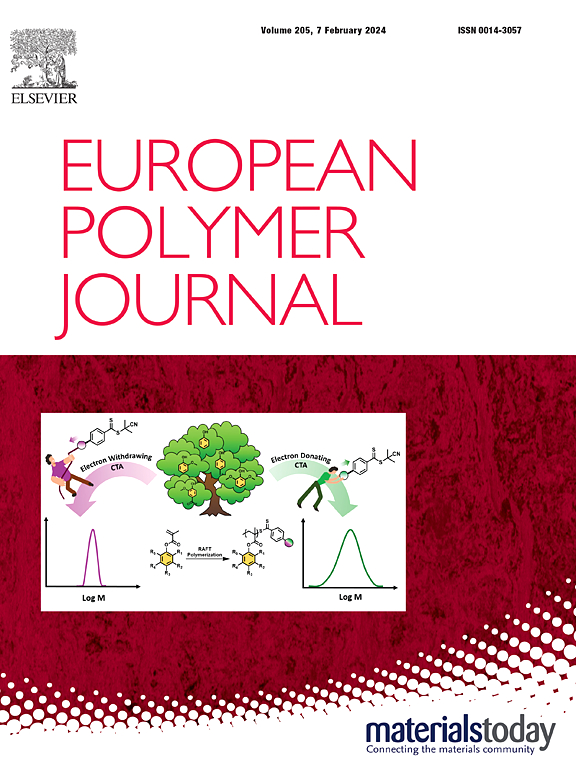Polyrotaxane based phase change materials-A critical review
IF 5.8
2区 化学
Q1 POLYMER SCIENCE
引用次数: 0
Abstract
Polyrotaxane-based phase change materials (PLR-PCMs) are increasingly recognized as versatile and efficient solutions for thermal energy storage, offering benefits such as outstanding form stability, leakage proof performance, flexibility, and multifunctional capabilities. This mini-review delves into the synthesis and processing techniques, functionalization strategies, and diverse applications (such as, thermal management in electronics and thermoelectric conversion) of PLR-PCMs, with a focus on recent progress in improving the flexible PCM properties and exploring innovative applications in energy storage, electronics, and thermoelectric conversion. Moreover, it provides a critical assessment of the advantages over conventional flexible PCMs, disadvantages, and future outlooks of PLR-PCMs, underscoring their transformative potential in advancing energy management and fostering sustainable technological development.

求助全文
约1分钟内获得全文
求助全文
来源期刊

European Polymer Journal
化学-高分子科学
CiteScore
9.90
自引率
10.00%
发文量
691
审稿时长
23 days
期刊介绍:
European Polymer Journal is dedicated to publishing work on fundamental and applied polymer chemistry and macromolecular materials. The journal covers all aspects of polymer synthesis, including polymerization mechanisms and chemical functional transformations, with a focus on novel polymers and the relationships between molecular structure and polymer properties. In addition, we welcome submissions on bio-based or renewable polymers, stimuli-responsive systems and polymer bio-hybrids. European Polymer Journal also publishes research on the biomedical application of polymers, including drug delivery and regenerative medicine. The main scope is covered but not limited to the following core research areas:
Polymer synthesis and functionalization
• Novel synthetic routes for polymerization, functional modification, controlled/living polymerization and precision polymers.
Stimuli-responsive polymers
• Including shape memory and self-healing polymers.
Supramolecular polymers and self-assembly
• Molecular recognition and higher order polymer structures.
Renewable and sustainable polymers
• Bio-based, biodegradable and anti-microbial polymers and polymeric bio-nanocomposites.
Polymers at interfaces and surfaces
• Chemistry and engineering of surfaces with biological relevance, including patterning, antifouling polymers and polymers for membrane applications.
Biomedical applications and nanomedicine
• Polymers for regenerative medicine, drug delivery molecular release and gene therapy
The scope of European Polymer Journal no longer includes Polymer Physics.
 求助内容:
求助内容: 应助结果提醒方式:
应助结果提醒方式:


